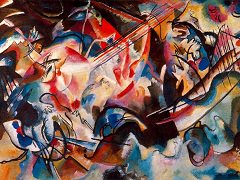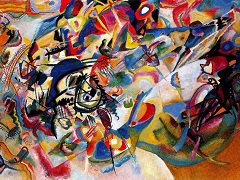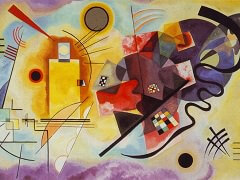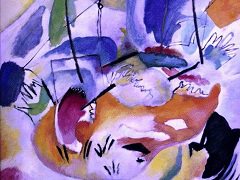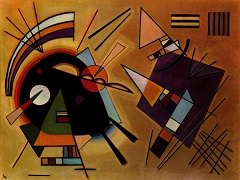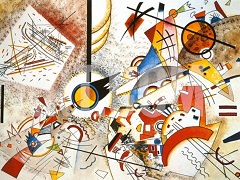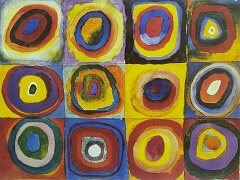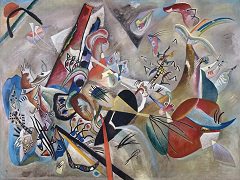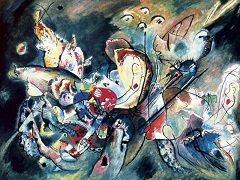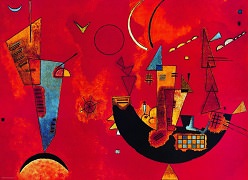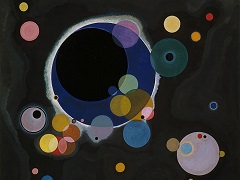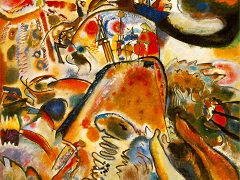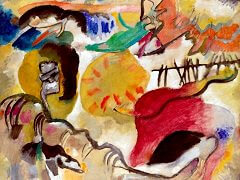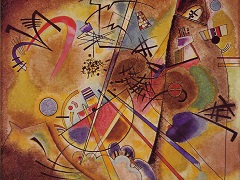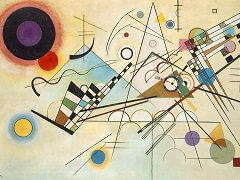Reciprocal, 1935 by Wassily Kandinsky
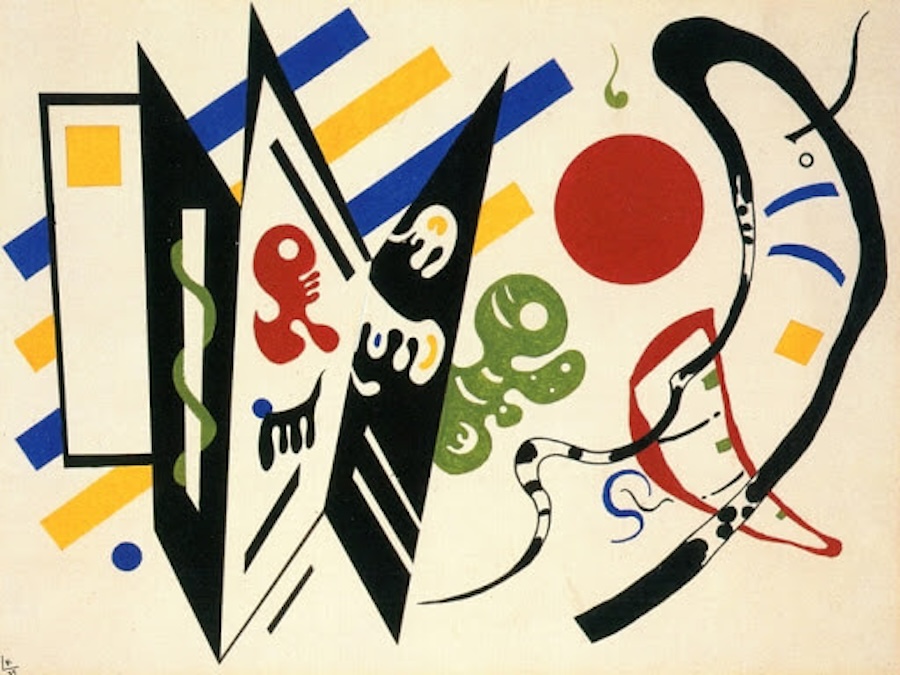
After settling down in Paris, Kandinsky realized that Abstraction was not as popular as it had been elsewhere, particularly in early post-revolutionary Russia ond Germany, In Paris the emphasis was more on figurative painting, especially Surrealism. The doyen of the movement, the self-promoting 'pope' was Andre Breton, whose polemicol style had ensured that Surrealism was the avant-garde. Additionally he had recruited many of the Dadaists from the avant-garde and more recently recruited another egotistical polemicist, Salvador Dali, to the cause. The Surrealists had produced a manifesto and were also politically active, ensuring that they remained in the forefront of the avant-garde.
As a counter to these developments, a group of abstract artists formed Abstraction-Creation to provide a forum for international debate and an exchange of ideas, as well as providing exhibiting opportunities in Paris and elsewhere. Reciprocal is one of these works from that period that combines Constructivist elements with biomorphic forms. This vocabulary found a resonance with other artists within the group such as Hons Arp, who used these 'forms' not just in pointing, but also in his sculpture.

